2,10-epoxypinane
Modify Date: 2024-01-08 17:04:18
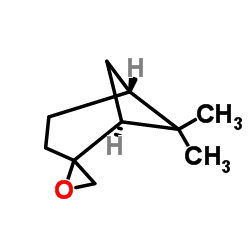
2,10-epoxypinane structure
|
Common Name | 2,10-epoxypinane | ||
|---|---|---|---|---|
| CAS Number | 6931-54-0 | Molecular Weight | 152.233 | |
| Density | 1.0±0.1 g/cm3 | Boiling Point | 202.1±0.0 °C at 760 mmHg | |
| Molecular Formula | C10H16O | Melting Point | N/A | |
| MSDS | N/A | Flash Point | 54.4±15.3 °C | |
| Name | (+)-β-Pinene oxide |
|---|---|
| Synonym | More Synonyms |
| Density | 1.0±0.1 g/cm3 |
|---|---|
| Boiling Point | 202.1±0.0 °C at 760 mmHg |
| Molecular Formula | C10H16O |
| Molecular Weight | 152.233 |
| Flash Point | 54.4±15.3 °C |
| Exact Mass | 152.120117 |
| PSA | 12.53000 |
| LogP | 2.16 |
| Vapour Pressure | 0.4±0.3 mmHg at 25°C |
| Index of Refraction | 1.514 |
Synonym:Spiro(Bicyclo(3.1.1)Heptane-2,2'-Oxirane), 6,6-Dimethyl- (9CI); 2,10-Epoxypinane Section 2 - COMPOSITION, INFORMATION ON INGREDIENTS
Risk Phrases: None Listed. Section 3 - HAZARDS IDENTIFICATION EMERGENCY OVERVIEW
The toxicological properties of this material have not been fully investigated. Potential Health Effects Eye: May cause eye irritation. May cause chemical conjunctivitis and corneal damage. Skin: May cause irritation and dermatitis. May cause cyanosis of the extremities. Ingestion: May cause gastrointestinal irritation with nausea, vomiting and diarrhea. The toxicological properties of this substance have not been fully investigated. Ingestion of large amounts may cause central nervous depression. Inhalation: May cause respiratory tract irritation. The toxicological properties of this substance have not been fully investigated. Aspiration may lead to pulmonary edema. Inhalation at high concentrations may cause CNS depression and asphixiation. Chronic: Effects may be delayed. Section 4 - FIRST AID MEASURES Eyes: Immediately flush eyes with plenty of water for at least 15 minutes, occasionally lifting the upper and lower eyelids. Get medical aid. Skin: Get medical aid. Flush skin with plenty of water for at least 15 minutes while removing contaminated clothing and shoes. Wash clothing before reuse. Ingestion: Never give anything by mouth to an unconscious person. Get medical aid. Do NOT induce vomiting. If conscious and alert, rinse mouth and drink 2-4 cupfuls of milk or water. Inhalation: Get medical aid immediately. Remove from exposure and move to fresh air immediately. If not breathing, give artificial respiration. If breathing is difficult, give oxygen. Do NOT use mouth-to-mouth resuscitation. Notes to Physician: Section 5 - FIRE FIGHTING MEASURES General Information: As in any fire, wear a self-contained breathing apparatus in pressure-demand, MSHA/NIOSH (approved or equivalent), and full protective gear. During a fire, irritating and highly toxic gases may be generated by thermal decomposition or combustion. Use water spray to keep fire-exposed containers cool. Vapors may be heavier than air. They can spread along the ground and collect in low or confined areas. Containers may explode when heated. Runoff from fire control or dilution water may cause pollution. Combustible liquid and vapor. Extinguishing Media: In case of fire, use water, dry chemical, chemical foam, or alcohol-resistant foam. Use water spray to cool fire-exposed containers. Use agent most appropriate to extinguish fire. Section 6 - ACCIDENTAL RELEASE MEASURES General Information: Use proper personal protective equipment as indicated in Section 8. Spills/Leaks: Absorb spill with inert material (e.g. vermiculite, sand or earth), then place in suitable container. Avoid runoff into storm sewers and ditches which lead to waterways. Clean up spills immediately, observing precautions in the Protective Equipment section. Remove all sources of ignition. Use a spark-proof tool. Provide ventilation. Section 7 - HANDLING and STORAGE Handling: Wash thoroughly after handling. Remove contaminated clothing and wash before reuse. Use only in a well-ventilated area. Avoid contact with eyes, skin, and clothing. Empty containers retain product residue, (liquid and/or vapor), and can be dangerous. Keep container tightly closed. Avoid ingestion and inhalation. Do not pressurize, cut, weld, braze, solder, drill, grind, or expose empty containers to heat, sparks or open flames. Keep away from heat and flame. Storage: Keep away from sources of ignition. Keep container closed when not in use. Store in a tightly closed container. Store in a cool, dry, well-ventilated area away from incompatible substances. Section 8 - EXPOSURE CONTROLS, PERSONAL PROTECTION Engineering Controls: Facilities storing or utilizing this material should be equipped with an eyewash facility and a safety shower. Use adequate ventilation to keep airborne concentrations low. Exposure Limits CAS# 6931-54-0: Personal Protective Equipment Eyes: Wear appropriate protective eyeglasses or chemical safety goggles as described by OSHA's eye and face protection regulations in 29 CFR 1910.133 or European Standard EN166. Skin: Wear appropriate protective gloves to prevent skin exposure. Clothing: Wear appropriate protective clothing to minimize contact with skin. Respirators: Follow the OSHA respirator regulations found in 29 CFR 1910.134 or European Standard EN 149. Use a NIOSH/MSHA or European Standard EN 149 approved respirator if exposure limits are exceeded or if irritation or other symptoms are experienced. Section 9 - PHYSICAL AND CHEMICAL PROPERTIES Physical State: Liquid Color: clear, colorless Odor: Not available. pH: Not available. Vapor Pressure: Not available. Viscosity: Not available. Boiling Point: 98 - 100 deg C @ 27.00mmHG Freezing/Melting Point: Not available. Autoignition Temperature: Not applicable. Flash Point: 66 deg C ( 150.80 deg F) Explosion Limits, lower: Not available. Explosion Limits, upper: Not available. Decomposition Temperature: Solubility in water: Specific Gravity/Density: .9760g/cm3 Molecular Formula: C10H16O Molecular Weight: 152.24 Section 10 - STABILITY AND REACTIVITY Chemical Stability: Stable under normal temperatures and pressures. Conditions to Avoid: Ignition sources, excess heat. Incompatibilities with Other Materials: Strong oxidizing agents, strong acids, strong bases. Hazardous Decomposition Products: Carbon monoxide, carbon dioxide. Hazardous Polymerization: Has not been reported Section 11 - TOXICOLOGICAL INFORMATION RTECS#: CAS# 6931-54-0: TK4570000 LD50/LC50: Not available. Carcinogenicity: (+)-beta-Pinene oxide - Not listed by ACGIH, IARC, or NTP. Other: See actual entry in RTECS for complete information. Section 12 - ECOLOGICAL INFORMATION Section 13 - DISPOSAL CONSIDERATIONS Dispose of in a manner consistent with federal, state, and local regulations. Section 14 - TRANSPORT INFORMATION IATA Not regulated as a hazardous material. IMO Not regulated as a hazardous material. RID/ADR Not regulated as a hazardous material. Section 15 - REGULATORY INFORMATION European/International Regulations European Labeling in Accordance with EC Directives Hazard Symbols: Not available. Risk Phrases: Safety Phrases: S 24/25 Avoid contact with skin and eyes. WGK (Water Danger/Protection) CAS# 6931-54-0: No information available. Canada CAS# 6931-54-0 is listed on Canada's DSL List. CAS# 6931-54-0 is not listed on Canada's Ingredient Disclosure List. US FEDERAL TSCA CAS# 6931-54-0 is listed on the TSCA inventory. SECTION 16 - ADDITIONAL INFORMATION N/A |
CHEMICAL IDENTIFICATION
HEALTH HAZARD DATAACUTE TOXICITY DATAMUTATION DATA
|
| Hazard Codes | Xi: Irritant; |
|---|---|
| Risk Phrases | R36/37/38 |
| Safety Phrases | S26-S37/39 |
| HS Code | 2910900090 |
|
~70% 
2,10-epoxypinane CAS#:6931-54-0 |
| Literature: Xie, Gaoyang; Xu, Linxiao; Hu, Jun; Ma, Shiming; Hou, Wei; Tao, Fenggang Tetrahedron Letters, 1988 , vol. 29, # 24 p. 2967 - 2968 |
|
~% 
2,10-epoxypinane CAS#:6931-54-0
Detail
|
| Literature: Applied Catalysis A: General, , vol. 419-420, p. 215 - 220 |
|
~% 
2,10-epoxypinane CAS#:6931-54-0 |
| Literature: Tetrahedron Letters, , vol. 38, # 7 p. 1235 - 1238 |
|
~% 
2,10-epoxypinane CAS#:6931-54-0 |
| Literature: Catalysis Today, , vol. 157, # 1-4 p. 364 - 370 |
|
~% 
2,10-epoxypinane CAS#:6931-54-0 |
| Literature: Comptes Rendus Hebdomadaires des Seances de l'Academie des Sciences, , vol. 189, p. 855 Zhurnal Russkago Fiziko-Khimicheskago Obshchestva, , vol. 61, p. 463 Chem. Zentralbl., , vol. 100, # II p. 2556 |
|
~% 
2,10-epoxypinane CAS#:6931-54-0
Detail
|
| Literature: Advanced Synthesis and Catalysis, , vol. 352, # 10 p. 1771 - 1778 |
| Precursor 1 | |
|---|---|
| DownStream 10 | |
| HS Code | 2910900090 |
|---|---|
| Summary | 2910900090. epoxides, epoxyalcohols, epoxyphenols and epoxyethers, with a three-membered ring, and their halogenated, sulphonated, nitrated or nitrosated derivatives. VAT:17.0%. Tax rebate rate:13.0%. . MFN tariff:5.5%. General tariff:30.0% |
| Pinane,2,10-epoxy |
| 2,10-epoxypinane |
| Spiro[bicyclo[3.1.1]heptane-2,2'-oxirane], 6,6-dimethyl-, (1S,5R)- |
| 2,10-epoxy-pinan |
| Pinan |
| EINECS 230-055-8 |
| (1S,5R)-6,6-Dimethylspiro[bicyclo[3.1.1]heptane-2,2'-oxirane] |
| MFCD00074769 |

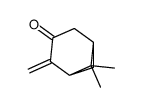
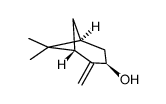
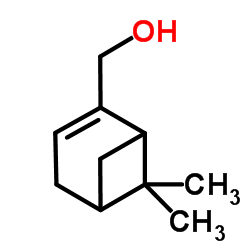
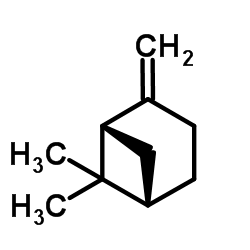
![Bicyclo[3.1.1]heptan-2-one,6,6-dimethyl- structure](https://www.chemsrc.com/caspic/407/24903-95-5.png)
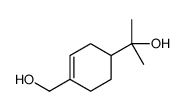
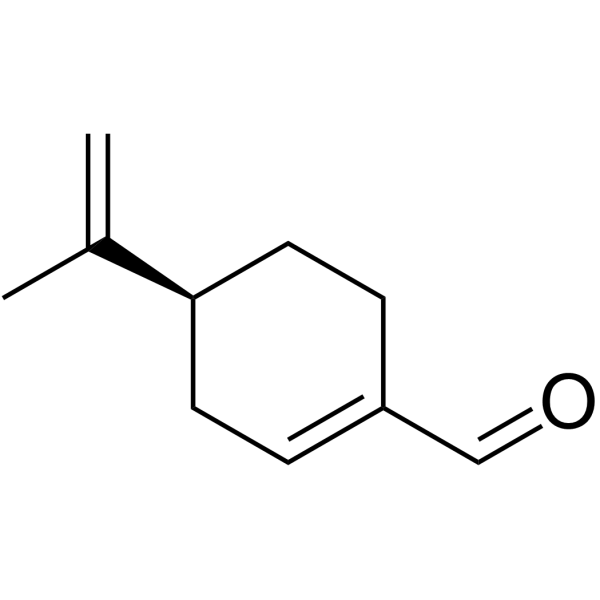 CAS#:18031-40-8
CAS#:18031-40-8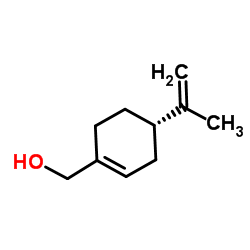 CAS#:536-59-4
CAS#:536-59-4![6,6-dimethylbicyclo[3.1.1]heptane-2-carbaldehyde structure](https://www.chemsrc.com/caspic/043/4764-14-1.png) CAS#:4764-14-1
CAS#:4764-14-1 CAS#:13674-19-6
CAS#:13674-19-6 CAS#:13828-37-0
CAS#:13828-37-0 CAS#:23635-14-5
CAS#:23635-14-5 CAS#:5503-12-8
CAS#:5503-12-8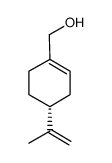 CAS#:57717-97-2
CAS#:57717-97-2